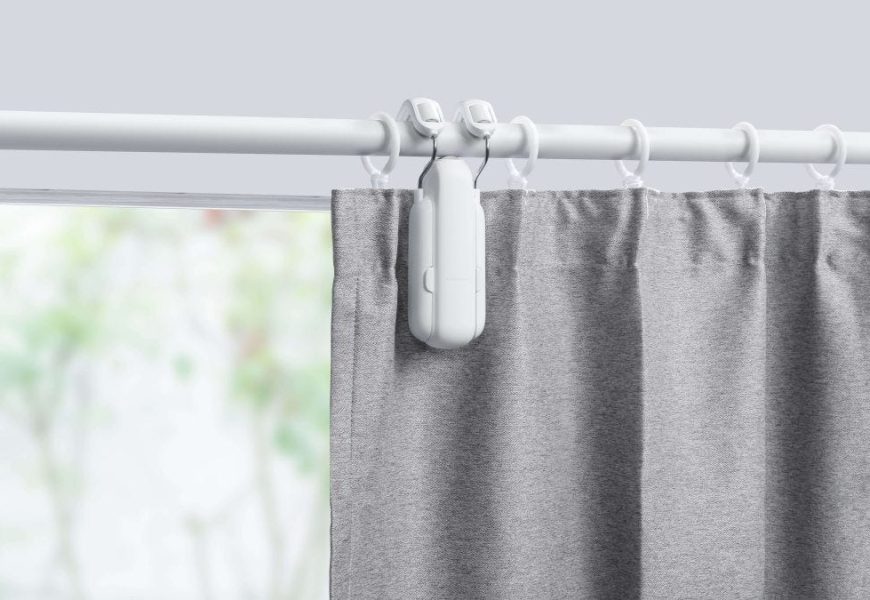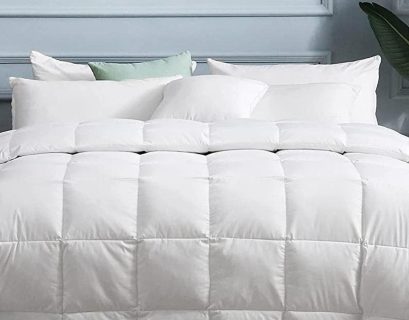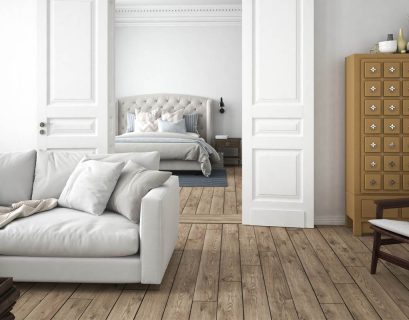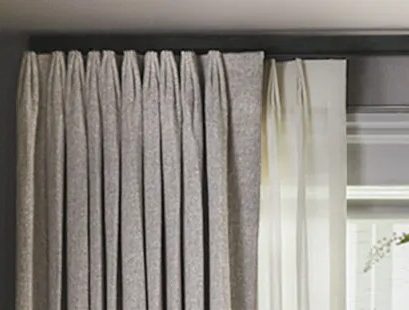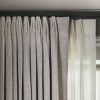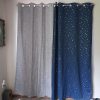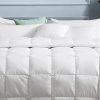The interplay between natural light and privacy is a delicate balance that greatly influences the ambiance of a space. Choosing the right curtains can transform a room, allowing an abundance of natural light to filter in while preserving the sanctuary of personal space. In this comprehensive guide, we’ll explore strategies to select curtains that maximize natural light while maintaining privacy, helping you achieve a harmonious and luminous atmosphere in your home.
Understanding the Importance of Natural Light and Privacy:
- Benefits of Natural Light:
- Mood Enhancement: Natural light has a positive impact on mood and well-being, creating a bright and uplifting environment.
- Energy Efficiency: Maximizing natural light reduces the need for artificial lighting during the day, contributing to energy efficiency.
- Privacy Considerations:
- Personal Space: Curtains act as a visual barrier, defining personal space and providing a sense of security.
- Day and Night Privacy: The choice of curtains should offer both daytime privacy, allowing filtered light, and nighttime privacy, preventing outsiders from seeing into your home.
Strategies for Maximizing Natural Light:
- Sheer Curtains:
- Material: Sheer curtains are made from lightweight and translucent fabrics that allow ample natural light to filter through.
- Benefits: Ideal for creating an airy and open feel while maintaining a level of privacy. Sheer curtains soften the harshness of direct sunlight, creating a gentle glow.
- Light-Filtering Fabrics:
- Material: Opt for light-filtering fabrics that allow natural light to permeate while providing a degree of privacy.
- Benefits: These fabrics diffuse sunlight, reducing glare and creating a softer illumination in the room. Cotton, linen, and certain synthetic blends work well for light-filtering curtains.
- Curtain Length and Placement:
- Length: Choose curtains that are either below sill length or floor-length to maximize the entry of natural light. Avoid heavy or dark curtains that can absorb light.
- Placement: Install curtain rods high and wide to create the illusion of larger windows and allow more light to enter when the curtains are open.
- Layering with Sheers and Drapes:
- Combination: Combine sheer curtains with drapes or heavier curtains for a layered effect.
- Benefits: This approach allows flexibility in controlling the amount of natural light and privacy. During the day, sheer curtains can be drawn, while heavier drapes provide privacy when needed.
- Curtain Hardware:
- Hardware Choice: Use curtain rods with minimalistic designs or opt for hidden tracks to maintain a clean and unobtrusive appearance.
- Benefits: Choosing discreet hardware ensures that the focus remains on the curtains and the natural light they allow in.
Privacy-Preserving Curtain Options:
- Blackout Curtains:
- Material: Blackout curtains are crafted from dense and opaque fabrics designed to block out light entirely.
- Benefits: Ideal for bedrooms or spaces where maximum privacy is required. They are effective in preventing outsiders from seeing into the room, especially during the night.
- Top-Down Bottom-Up Shades:
- Mechanism: These shades can be adjusted to allow light from the top or bottom of the window, providing a balance between natural light and privacy.
- Benefits: Allows customization based on the time of day and personal preferences. They are particularly useful in maintaining privacy while still enjoying natural light.
- Woven Wood Shades:
- Material: Woven wood shades are crafted from natural materials like bamboo, creating a textured and organic appearance.
- Benefits: These shades filter light softly, offering daytime privacy. They are an excellent choice for spaces where a rustic or coastal aesthetic is desired.
- Frosted or Textured Glass Films:
- Application: Apply frosted or textured films to windows to diffuse light while maintaining privacy.
- Benefits: An alternative to traditional curtains, these films allow natural light to enter while obstructing the view into the room.
- Dual-Layer Curtains:
- Combination: Choose curtains with dual layers, combining sheer or light-filtering fabrics with thicker materials.
- Benefits: This design offers the versatility of adjusting privacy levels by opening or closing the different layers. During the day, the sheer layer allows natural light, while the thicker layer provides privacy at night.
Curtain Color and Pattern Considerations:
- Light Colors:
- Color Palette: Opt for light-colored curtains in whites, creams, or pastels to reflect and amplify natural light.
- Benefits: Light colors create an airy and open feel, enhancing the perception of brightness in the room.
- Neutral Patterns:
- Pattern Choice: If incorporating patterns, choose subtle and neutral designs that don’t overpower the space.
- Benefits: Neutral patterns add visual interest without compromising the light and open ambiance of the room.
- Horizontal Stripes:
- Pattern Style: Consider curtains with horizontal stripes to elongate the appearance of windows.
- Benefits: Horizontal stripes create an illusion of width, making windows appear larger and allowing more light to enter.
- Natural Materials:
- Material Choice: Opt for curtains made from natural materials like cotton or linen.
- Benefits: Natural materials contribute to a light and breezy atmosphere while allowing sunlight to filter through.
Practical Tips for Curtain Selection:
- Consider Room Orientation:
- North-Facing Rooms: Rooms facing north receive consistent but indirect sunlight. Sheer curtains or light-filtering options work well to maximize the available light.
- South-Facing Rooms: Rooms facing south receive more direct sunlight. Consider curtains that filter harsh light, such as light-filtering fabrics or blinds.
- Test Curtain Samples:
- Sample Swatches: Before committing to a curtain choice, obtain sample swatches and observe how they interact with natural light in the room.
- Benefits: Testing samples allows you to gauge the impact of different fabrics and colors on natural light.
- Customize Curtain Solutions:
- Tailored Solutions: Consider customizing curtain solutions based on the unique characteristics of each room.
- Benefits: Custom curtains provide a tailored fit, ensuring that the chosen materials and styles align with the room’s specific needs.
- Maintenance and Cleaning:
- Practicality: Choose curtains that are easy to maintain and clean. Machine-washable or low-maintenance fabrics are ideal for busy households.
- Benefits: Regular cleaning ensures that curtains maintain their brightness and transparency over time.
Conclusion:
Choosing curtains that enhance natural light while maintaining privacy involves a thoughtful consideration of various factors, including curtain length, fabric choice, and practical solutions. By striking the right balance between sheerness and opacity, you can create an environment that is bathed in natural light during the day and cocooned in privacy during the night. Whether you opt for sheer curtains, light-filtering fabrics, or innovative shade solutions, the goal is to seamlessly integrate the beauty of natural light into your home while preserving the sanctity of your personal space.
